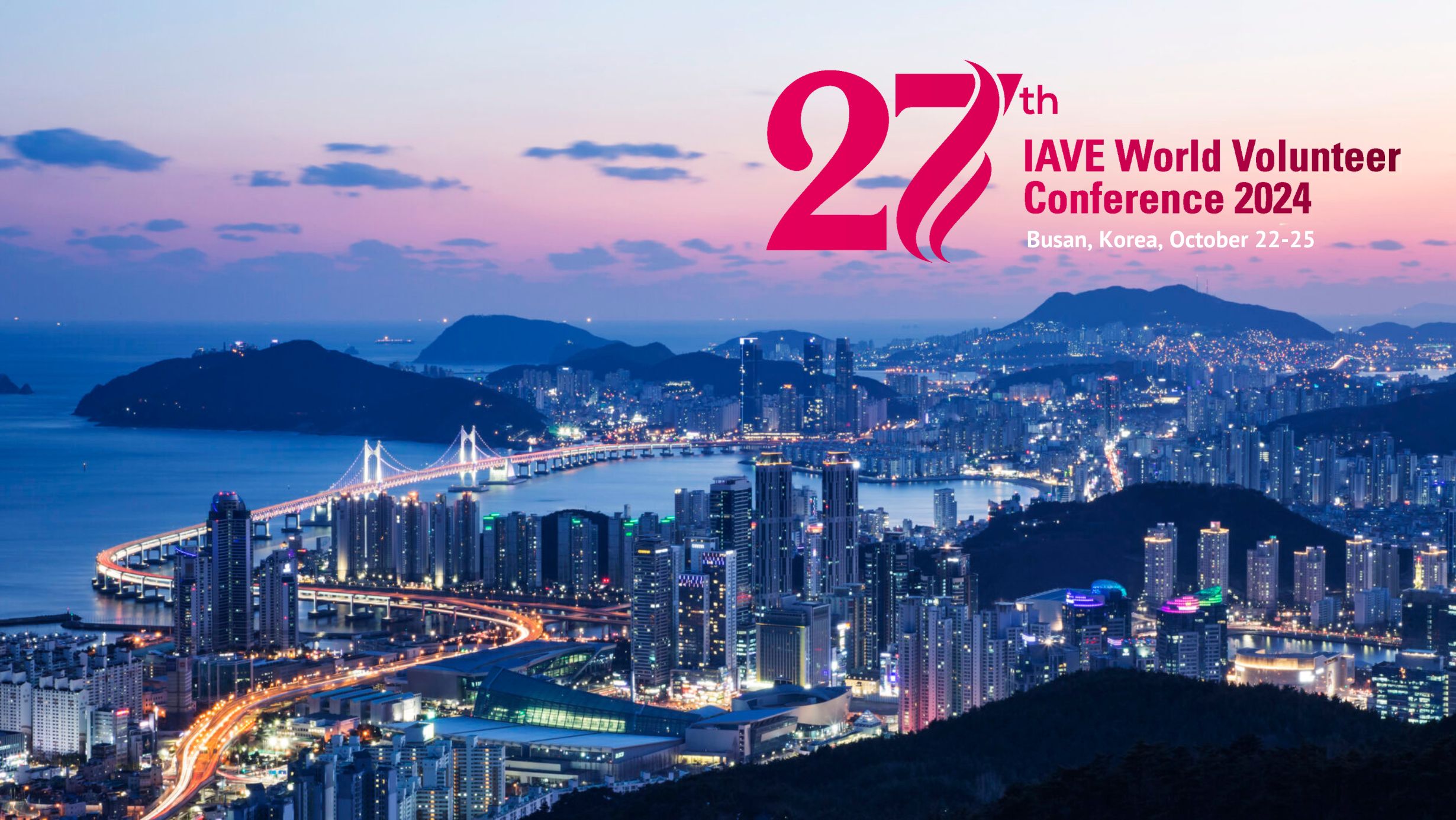
By: Lisa Mort-Putland, Board Chair, Volunteer Canada and Executive Director, Volunteer Victoria
As volunteer managers we often spend time explaining to the new people we meet that we are not unpaid managers, but we are paid professionals who are experts in volunteerism. Now, imagine the excitement of 1400 volunteer sector professionals introducing themselves to each other, and they already know this. That was the scene at the 27th World IAVE Conference in Busan, South Korea this October.
But an IAVE (International Association of Volunteer Effort) conference is about more than just confirming a shared understanding of volunteerism and meeting peers from across the globe.
While we enjoyed opening remarks from his Excellency the President of South Korea, the Kimchi Culture, the gorgeous food and entertainment and even a surprise live appearance from Psy, where we danced the night away, Gangnam Style, we also went to work – learning from one another, exploring what volunteerism looks like now and looking forward, what will it look like 5 years from now.
We talked about the world-wide challenge of loneliness and isolation, and the impacts that are felt primarily by youth and seniors, but also on middle-aged people who are working so hard that there is little time to meet with people, volunteer, and build community.
Many people shared their recent experiences with climate emergencies. Over 330 million people in Pakistan were flooded from their homes this year.
While a couple of hundred square miles in size and with a population of just thousands, the Island of Saint Lucia also faces repeat catastrophic impacts from wind and water. We heard similar stories from many other attendees including Togo, the USA, Spain, Ireland, Africa, and Canada.
The question at hand is not how do we manage emergencies, but how do we plan for emergencies and mitigate the trauma so that everyone receives dignity, kindness, and the right resources, in real time, every time a disaster hits?
A partial answer in Pakistan emerged after an investment in mid-level volunteerism. They are working with women’s groups in rural communities to build local resiliency so that when disasters hit, the community-based volunteers know what to do and who to connect with on the ground and upstream. Yes, they engage in real time volunteer coordination, but they also invest in permanent volunteering infrastructure.
The “missing middle infrastructure” is not a problem in South Korea where they have 246 volunteer centres and over 1800 volunteer managers. Yes, that’s right, over 1800 volunteer managers are imbedded in communities. Not all the managers are paid – but all of them are trained, resourced, and ready to act when the community needs them. In Busan they shared the example of a major oil leak that contaminated local beaches. Over a million volunteers stepped in to stop the disaster from worsening and to clean the beaches to pristine levels.
The volunteers would not have succeeded without existing infrastructure and the volunteer managers – where have we heard this story before?
Ireland inspired with their approach to creating robust Safeguarding policies. They recognized that some of their most consequential problems were not with new volunteers, but with existing ones. A culture of silence meant that problem volunteers moved from organization to organization without any mitigation or consequences. That is, until volunteer agencies serving children, youth, and vulnerable adults got together and made some universal policy decisions. First, every organization serving vulnerable people would create and share their safeguarding policies with the public. Second, every organization would create and share their process for investigating allegations. And thirdly, if a problem was identified the issue would not be kept secret – authorities would be informed, incidents would be investigated, and in keeping with the stated policies of the organization, volunteers would face consequences for unwanted behaviours.
As a policy nerd, I love that a community of practice came together to mitigate a complicated systemic problem while still allowing organizations self determination and autonomy. Volunteer management is about so much more than volunteer assessment and coordination, and Ireland has shown us that we can build a shared path to improved safety and transparency if we are willing to work together.
Of course, there was lots of talk about AI and technology at this conference and its impact on industries and communities. Large corporations integrate AI into their operations and often reduce the size of their workforces. Will AI mean that millions of people will have more time to volunteer – or without an employer to coordinate their volunteerism will former volunteers fall through the cracks? We still don’t know how the volunteer-led sector will respond to the needs of volunteers looking for real-time information and connections post generative AI. But we agree that we need to be more prepared for the seismic shifts that are about to happen.
There are proud, effective, professional, volunteering management specialists working in the global south and the global north. We share a belief in the power and impact of volunteerism. We know that we need to invest in our volunteers and invest in our volunteering infrastructure, through a National Volunteer Action Strategy, because volunteerism delivers solutions for complex challenges and simple acts of kindness every day, across the world.
We also know that when someone at an IAVE conference pulls out their phone to record 1400 people dancing Gangnam Style, the evidence will probably be shared. Not because we have identified poor behaviours, but because we are a profession that sees value in creating happiness and sharing smiles.
